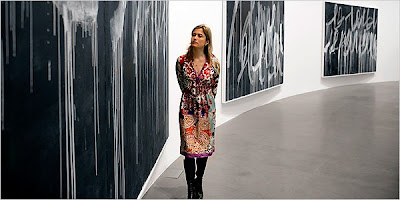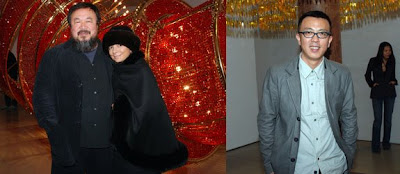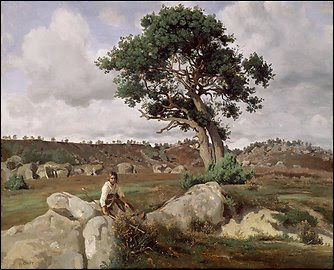“You wouldn’t know it from wandering around the crowded art fair in Bologna a few weeks ago, or from seeing Larry Gagosian’s new gallery in Rome, where some of the moneyed, antiseptic air of the Chelsea of New York reaches the neighborhood around the Spanish Steps. But Italy has become the basket case of Western Europe.

“So everybody says. It is still tourist heaven, of course, if you’re not paying in dollars. In political terms, though, it’s forever chasing its own tail. This winter the government, chronically geriatric, fell for the umpteenth time. Decades of festering indecision caused rotting garbage to pile up in the streets of Naples.
“But then there’s the contemporary art scene…
“A new museum is under construction in Rome, nicknamed Maxxi, designed by Zaha Hadid. A museum opened not long ago in Bologna called Mambo. (Italians love their acronyms.) The Prada Foundation has just bought an exhibition space in the south of Milan; Rem Koolhaas will be that architect. And in the north of Milan there’s Hangar Bicocca, a vast former Pirelli factory devoted to gigantic installations; Anselm Kiefer’s, an awesome series of towers built of tottering concrete blocks, has justly become a pilgrimage site…”
Twombly In The Land of Michaelangelo, The New York Times.
“Many chefs regard their dishes as works of art. Now the concept is to be turned on its head by an artist who plans to prepare a giant salad, dress it, mix it and dish it up for 300 people in an event at London’s Tate Modern.
Alison Knowles, an American experimental artist, will co-ordinate the chopping, mixing and serving, set to the music of Mozart, in a performance designed to blur the line between art and everyday activity.
“It’s a participatory event in every sense,” said Kathy Noble, the event’s curator…”
Tate Serves up taste of Art, The Australian.

Left: Artist Ai Weiwei with dealer Mary Boone. Right: Artist Liu Xiaodong.
“Hours before Ai Weiwei’s opening last Saturday at Mary Boone, some wondered: Who exactly would be in attendance? I found myself hoping that Ai would jet in a bevy of Chinese compatriots, in a reprise of his 2007 Documenta piece. Perhaps he would stow them on cots behind the gallery’s reception desk or between catalogues raisonnés on Mary Boone’s shelves? In the end, this didn’t come to pass, though a large percentage of the well-wishers had ties to the Chinese and Chinese-expat art scene. Indeed, many present were direct or indirect products of Ai’s influence, such as Zhang Huan, who was smoking outside the gallery entrance, wearing something like a bad-boy do-rag. If Marina Abramovic has taken to calling herself the “grandmother of performance art,” Ai is more than entitled to claim a similar rank in the genealogy of Chinese contemporary art.
Weiwei… don’t tell me, Artforum.com DIARY.
“On the eve of his 19th birthday, Marvin Forbes did something which completely shocked his mates: he sat down at the piano which had appeared overnight on the corner of Orphanage and Mason roads, and played a few bars of Offenbach. “I never knew you could do that!” Thasawar Iqbal said, stunned.
“I knew,” muttered another friend, Anthony Murrain. When the group had first walked past the piano on their lunch break, glancing at it out of the corners of their eyes with studied lack of interest, Forbes had insisted he could not play, never had played, and would not know what to do with a piano if it suddenly popped up outside the library with a spray-painted sign reading: “Play me, I’m yours.”
Pianos Hit The Streets, The Guardian.

Jean-Baptiste-Camille Corot’s “Le Rageur, Forest of Fontainebleau” from 1830.
“We’re outside. This is a good moment in the history of art. We’re in the forest of Fontainebleau (35 miles south of Paris, eight hours by horse-drawn coach, an hour on the train) and all about us bohemian Parisian painters with easels and beards and mud on their shoes, and experimental photographers with big cameras, are scrutinizing the old trees and the damp underbrush and the way the light falls.
“We’re in the industrializing 19th century, after Napoleon but before impressionism, which hasn’t arrived yet but is coming. The place is stony and wild. A thousand years ago, King Robert the Pious preserved it for the chase. It’s good for hunting.
“In the Forest of Fontainebleau: Painters and Photographers From Corot to Monet,” a smart 100-picture landscape exhibition at the National Gallery of Art, puts you there…”
Painting’s Good, Rooted in a French Forrest, The Washington Post.
